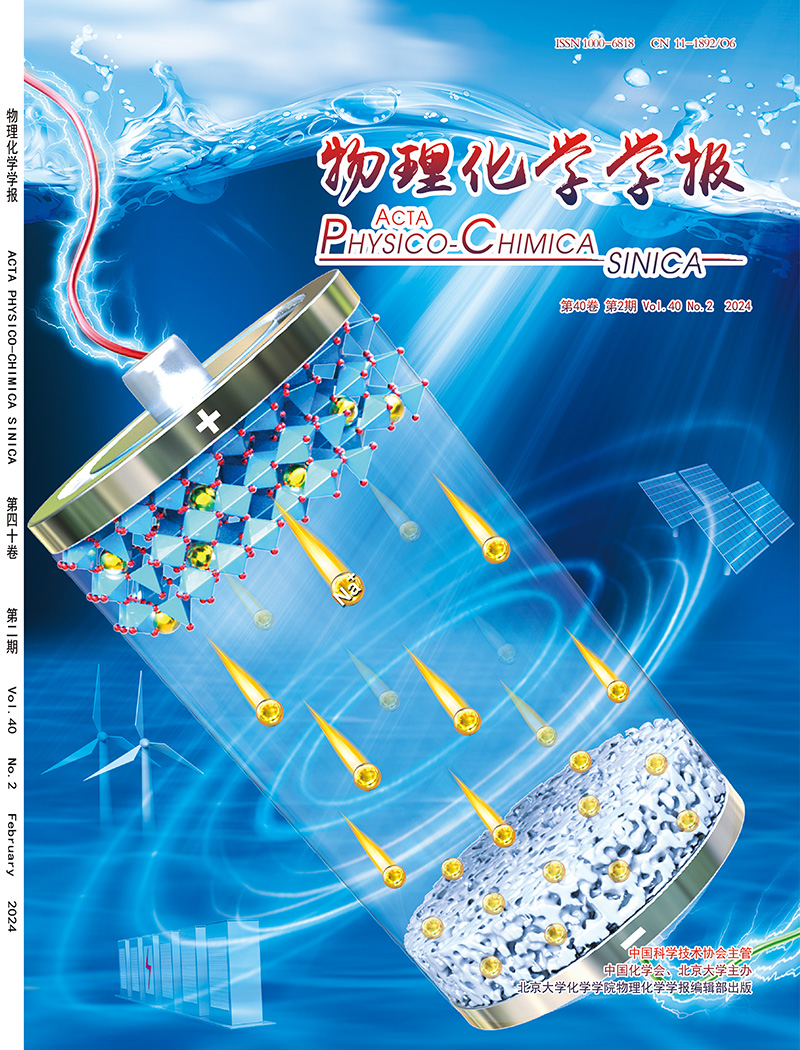在选择性化学蚀刻过程中,通过原位形成缺陷较少的碳网络,集成活性炭的高表面积和导电性
IF 13.5
2区 化学
Q1 CHEMISTRY, PHYSICAL
引用次数: 0
摘要
活性炭具有表面积大、导电性好、电化学稳定性好等优点,被广泛用作超级电容器的电极材料。提高活性炭的导电性是促进其电化学储能的关键,但由于发育良好的孔隙通常会破坏连续的导电网络,因此很难实现。为了解决这一问题,研究人员开发了几种方法,如选择高共轭碳前驱体、高温后处理、与高导电性纳米碳复合、局部催化石墨化等。然而,这些方法普遍存在成本高、效率低、牺牲比表面积等缺点。在此,我们提出了一种选择性化学蚀刻策略,以沥青和聚丙烯腈(PAN)的混合物为前驱体,制备具有高表面积和高导电性的活性炭。通过系统研究纯沥青、纯PAN和复合前驱体的活化行为,我们证明PAN衍生碳含有非晶和结晶成分。在活化过程中,无定形碳由于其高反应活性而主要被蚀刻掉,导致原位形成的缺陷较少的碳作为整个导电网络。优化后的样品的表面积为2773 m2 g−1,电导率为912 S m−1,提高了2.6倍,优于大多数已报道的活性炭。此外,通过预氧化,沥青和PAN分子之间的强交联使得活性炭的产率比纯沥青活性炭(34%)高58%。优化后的交联结构也使得活化剂K+更容易吸附在碳前驱体中,从而提高了活化效率。因此,嵌入的PAN在构建导电网络的同时提高了活化效率,使活性炭的高导电性与表面积相结合。对于水相超级电容器,在10 mg cm−2的高电极质量负载下,优化材料表现出显著的面电容(在1 A g−1下为2.8 F cm−2)和良好的倍率性能(在50 A g−1下保持41%)。该器件具有较高的能量密度(10.9 Wh·kg−1)和显著的循环稳定性(循环50000次后保持100%)。原因是良好的导电性使得高表面积利用率,显著改善双电层形成和离子传输动力学。这项工作证明了高导电性活性炭在实际应用中的巨大潜力,并为先进储能导电性活性炭的设计提供了新的见解。本文章由计算机程序翻译,如有差异,请以英文原文为准。

Integrating high surface area and electric conductivity in activated carbon by in-situ formation of a less-defective carbon network during selective chemical etching
Activated carbons are widely used as electrode materials for supercapacitors owing to their large surface area, good electric conductivity, and outstanding electrochemical stability. Improving the electric conductivity of activated carbon is crucial for promoting its electrochemical energy storage, but it is hard to achieve because well-developed pores usually break the continuous conductive network. To solve this problem, researchers have developed several methods, such as the selection of highly-conjugated carbon precursors, high-temperature post-treatment, compositing with highly conductive nanocarbons, and local catalytic graphitization. However, these methods generally suffer from high cost, low efficiency, and the sacrifice of specific surface area. Herein, we propose a selective chemical etching strategy to prepare activated carbon with both high surface area and electric conductivity using a mixture of pitch and polyacrylonitrile (PAN) as the precursor. Through systematic investigation of the activation behavior of pure pitch, pure PAN, and the composite precursors, we demonstrate that the PAN-derived carbon contains amorphous and crystallized components. During activation, the amorphous carbon is primarily etched away due to its high reactivity, leading to the in-situ formation of less-defective carbon as the entire conductive network. The optimized sample shows a surface area of 2773 m2 g−1 and 2.6 times increased electric conductivity of 912 S m−1, outperforming most of the reported activated carbons. Furthermore, the strong cross-linking between pitch and PAN molecules through pre-oxidation leads to a higher activated carbon yield of 58 % than the pure pitch activated carbon (34 %). The optimized cross-linking structure also allows the activator K+ to be adsorbed more easily in the carbon precursor, which enhances the activation efficiency. As a result, the embedded PAN simultaneously constructs a conductive network and promotes activation efficiency, leading to the integration of high electric conductivity and surface area of the activated carbon. For aqueous supercapacitor application, at the high electrode mass loading of 10 mg cm−2, the optimized material shows remarkable areal capacitance (2.8 F cm−2 at 1 A g−1) and good rate performance (41 % retention at 50 A g−1). The corresponding device shows high energy densities (10.9 Wh·kg−1) and remarkable cycle stability (100 % retention after 50000 cycles). The reason is that good electric conductivity enables high surface area utilization, significantly improved electric double-layer formation and ion transport kinetics. This work demonstrates the significant potential of highly conductive activated carbon for practical applications and provides novel insights into the design of conductive activated carbon for advanced energy storage.
求助全文
通过发布文献求助,成功后即可免费获取论文全文。
去求助

 求助内容:
求助内容: 应助结果提醒方式:
应助结果提醒方式:


